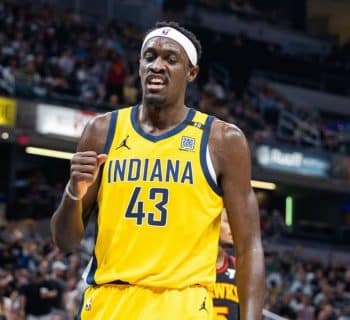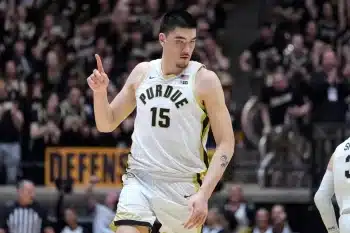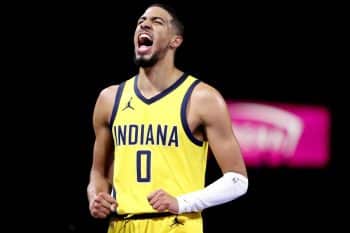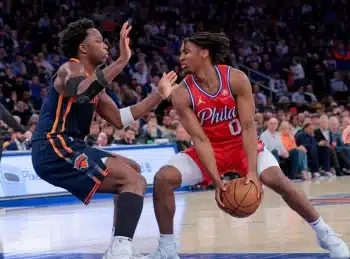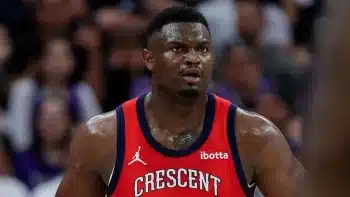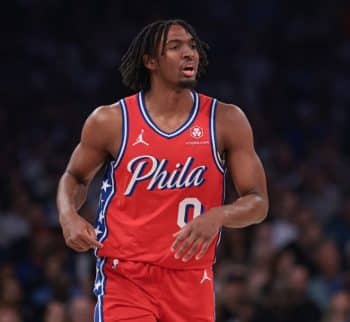NBA
The Jazz’s Conundrum Of Reintegrating Mike Conley
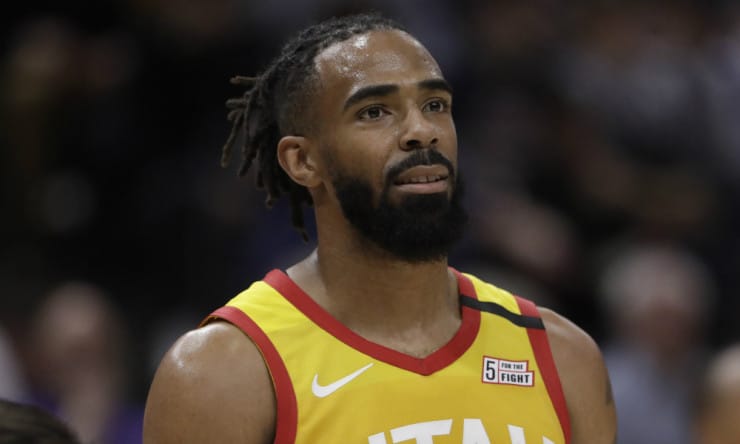
Thursday’s loss to the Denver Nuggets is why the Utah Jazz cashed in their chips for Mike Conley.
On the road against a short-handed team with aspirational title hopes, Utah was consistently unable to produce efficient offense or string together multiple stops after halftime. If not for Jordan Clarkson single-handedly keeping his new team competitive with a late-game scoring bonanza, the Jazz would have been blown out in a game they led by double-digits early.
Conley didn’t play against the Nuggets, sitting on the second leg of a back-to-back due to right knee soreness and general injury management. His absence was the perfect opportunity for Donovan Mitchell to prove his worth as Utah’s alpha dog, mere hours after he was named an All-Star for the first time. Instead, Mitchell played arguably the worst game of his career to date, failing to score until the fourth quarter while going 1-of-12 from the field and clanking all six of his three-point attempts.
It’s easy to assume the Jazz would have prevailed regardless had Conley been available. In late June, after finally making the move that could propel Utah to legitimate title contention, Dennis Lindsey surely had Mitchell’s immense postseason labors – he shot 32.1 percent over five games versus the switch-heavy Houston Rockets – in mind. Not only would the presence of an offensive threat like Conley make life easier overall on the Jazz’s budding superstar, but he could also take the offensive reins from Mitchell during times of stress.
The idea of Conley in Utah, though, has so far proven far more appealing than the reality. His individual numbers make that abundantly clear. Conley is shooting 40.5 percent from two-point range, by the far the worst mark of his career. His 12.5 percent turnover rate is his highest since 2014-15, and nearly four points worse than a season ago. Athletic indicators like his free throw rate and steal rate have fallen off a cliff, extra troubling considering Conley turned 32 in October.
That the Jazz immediately turned their would-be disappointing season around in early December when he was shelved for six weeks is more damning of Conley’s impact than any single statistic. Utah was 12-9 after a loss to the Philadelphia 76ers on Dec. 2, and Conley’s well-earned reputation made it seem like Quin Snyder’s team might completely derail without him. Instead, the Jazz went 16-4 as Conley missed every game but one with a bad hamstring, re-asserting themselves as sub-contenders in the West.
A paper-thin schedule played a major factor in Utah’s turnaround, but it’s disingenuous to suggest Conley’s absence didn’t also pay dividends. Joe Ingles, coming off the bench to begin the season for the first time in three years, was immediately reinvigorated by taking Conley’s place in the starting lineup. He’s making a scorching 46.8 percent of his threes and averaging 6.2 assists per game since being reinserted as a starter, vast improvements compared to a distressing start that left many wondering if Ingles, also 32, was suddenly and firmly on the downside of his career.
But no player exists in a vacuum, operating completely removed from the team construct – especially one as physically limited yet consistently effective as Ingles. From tip-off of the regular season to when he supplanted Conley as a starter, the worst stretch of Ingles’ career, almost half of his minutes came with Rudy Gobert, per NBA.com/stats. Ever since, he’s playing over 10 additional minutes per game next to the Jazz’s All-Star center, taking full advantage of the pressure Gobert puts on defenses as an imminent scoring threat on dives to the rim.
Ingles doesn’t have the burst to beat his man off the dribble straight up, and his slow release sometimes prevents him from even attempting looks from three other marksmen knock down with regularity. But he’s a plus offensive player regardless because of his ability to exploit a moving defense, finding small cracks in the opposition’s armor that are largely owed to Gobert’s presence as a screener and roller. The result? Ingles’ effective field goal percentage spikes over 12 points to an elite 60.4 when he’s playing with Gobert, and his assist percentage bumps up to 25.2 from 19.6, per NBA.com/stats.
Utah’s slow reintegration of Conley over the past two weeks, as he nears full health following a series of minor maladies, has staved off a tough decision Snyder was always going to be forced to make. Would it really be in the Jazz’s best interest to ditch their non-Conley starting five, a lineup whose +19.1 net rating ranks first in the NBA among all high-minute units? Conventional wisdom suggests not, but The Athletic reported on Friday that Utah is “on the verge” of putting Conley, who’s come off the bench in every game he’s played since returning on Jan. 18, back on the floor for tip-off.
Ingles, obviously, is most comfortable as a starter, playing the majority of his minutes with Gobert. But Royce O’Neale has blossomed on both ends this season, and is better suited to check – as best he can, at least – the oversized, superstar wings who the Jazz will have to beat in the playoffs to realize their ultimate goal.
The problem for Snyder is that it seems impossible for Utah to reach those championship heights unless Conley plays a pivotal role in his team getting there. Could Conley possibly do it while beginning games on the bench, serving as a de facto sixth starter? Perhaps, but that would be a tough pill for a veteran of his stature to swallow, and it could prevent him from developing the chemistry he needs to thrive with Gobert and Mitchell. Conley’s early-season labors, after all, could still prove more a symptom of nagging injuries and an inevitable acclimation period than some steep, sudden drop-off in his game.
That’s the only scenario in which the Jazz will challenge for the Larry O’Brien Trophy, and it’s probably the biggest reason why Snyder seems intent on putting Conley back in the starting five. But the effects of every lineup ripple. Utah doesn’t have the margin for experimentation and error the league’s top-tier contenders do, either. This team needs to be at its peak going into the playoffs to have a real chance at playing in June.
The Jazz scraped at that exalted level of play while Conley was sidelined. Now that he’s back, soon as a starter, the question isn’t just whether they can do so again, but if they can reach another plane of performance altogether.
